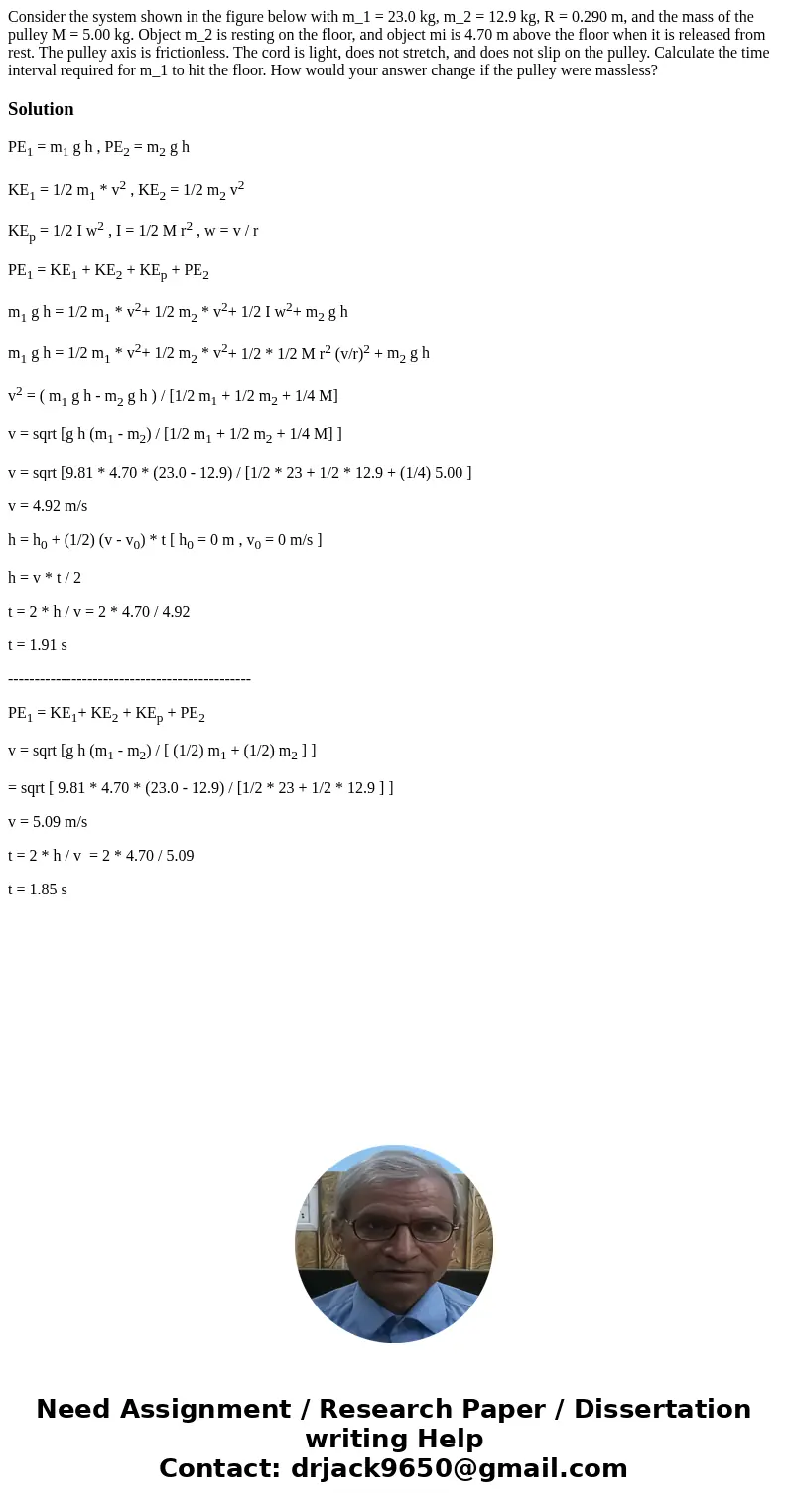Consider the system shown in the figure below with m1 230 k
Solution
PE1 = m1 g h , PE2 = m2 g h
KE1 = 1/2 m1 * v2 , KE2 = 1/2 m2 v2
KEp = 1/2 I w2 , I = 1/2 M r2 , w = v / r
PE1 = KE1 + KE2 + KEp + PE2
m1 g h = 1/2 m1 * v2+ 1/2 m2 * v2+ 1/2 I w2+ m2 g h
m1 g h = 1/2 m1 * v2+ 1/2 m2 * v2+ 1/2 * 1/2 M r2 (v/r)2 + m2 g h
v2 = ( m1 g h - m2 g h ) / [1/2 m1 + 1/2 m2 + 1/4 M]
v = sqrt [g h (m1 - m2) / [1/2 m1 + 1/2 m2 + 1/4 M] ]
v = sqrt [9.81 * 4.70 * (23.0 - 12.9) / [1/2 * 23 + 1/2 * 12.9 + (1/4) 5.00 ]
v = 4.92 m/s
h = h0 + (1/2) (v - v0) * t [ h0 = 0 m , v0 = 0 m/s ]
h = v * t / 2
t = 2 * h / v = 2 * 4.70 / 4.92
t = 1.91 s
----------------------------------------------
PE1 = KE1+ KE2 + KEp + PE2
v = sqrt [g h (m1 - m2) / [ (1/2) m1 + (1/2) m2 ] ]
= sqrt [ 9.81 * 4.70 * (23.0 - 12.9) / [1/2 * 23 + 1/2 * 12.9 ] ]
v = 5.09 m/s
t = 2 * h / v = 2 * 4.70 / 5.09
t = 1.85 s

 Homework Sourse
Homework Sourse